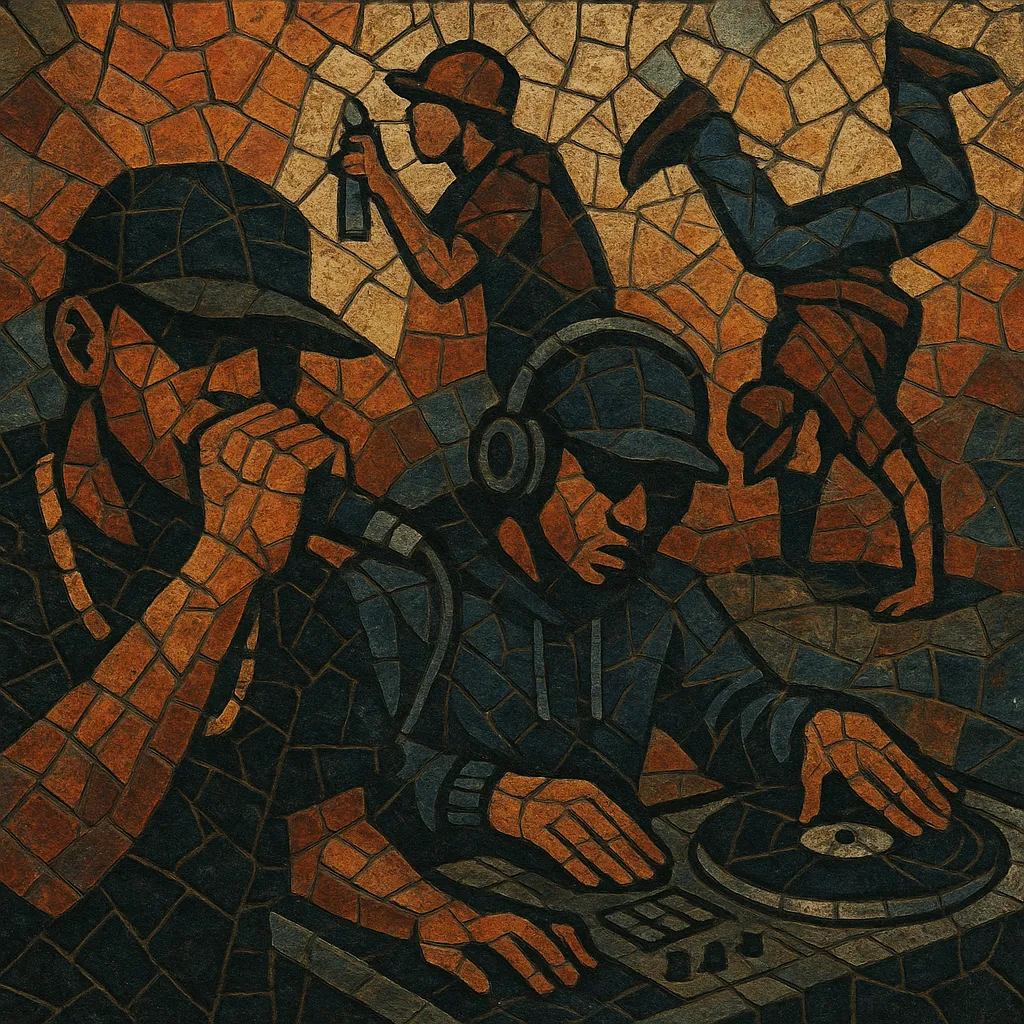Hip hop is a cultural and musical movement that emerged from Black, Latino, and Caribbean communities, centering around rapping (MCing), DJing/turntablism, sampling-based production, and rhythmic speech over beats. It prioritizes groove, wordplay, and storytelling, often reflecting the social realities of urban life.
Musically, hip hop is built on drum-centric rhythms (from breakbeats to 808 patterns), looped samples, and bass-forward mixes. Lyrically, it ranges from party anthems and braggadocio to political commentary and intricate poetic forms, with flow, cadence, and rhyme density as core expressive tools.
Beyond music, hip hop encompasses a broader culture, historically intertwined with graffiti, b-boying/b-girling (breakdance), fashion, and street entrepreneurship, making it both an art form and a global social language.
Hip hop emerged in the Bronx, New York City, in the early-to-mid 1970s, where DJs like DJ Kool Herc isolated and extended the "breaks" of funk and disco records to keep dancers moving. Sound system culture and toasting practices from Jamaica, alongside Black oral traditions and spoken word poetry, shaped MCing as hosts began to speak rhythmically over the DJ’s breaks. Early block parties formed the crucible for turntablism (cutting, backspinning, and later scratching) and the rise of crews.
Recordings such as "Rapper’s Delight" (1979) introduced rap to mainstream audiences, while Grandmaster Flash and the Furious Five advanced narrative and socially conscious lyricism with "The Message" (1982). Afrika Bambaataa fused electro and hip hop on "Planet Rock" (1982), expanding the sonic palette with drum machines and synthesizers.
This period saw an explosion of innovation in sampling, rhyme complexity, and thematic breadth. Run-D.M.C. pushed a harder, stripped-down sound; Public Enemy and the Bomb Squad pioneered dense, collage-like production and political urgency; and Native Tongues artists brought Afrocentricity, jazz samples, and playful lyricism. Regional identities began to solidify beyond NYC.
The West Coast popularized gangsta rap and G-funk (N.W.A, Dr. Dre, Snoop Dogg), emphasizing synthesizer leads, heavy bass, and street reportage. Concurrently, the East Coast renaissance (Nas, The Notorious B.I.G., Wu-Tang Clan) refined boom-bap and sample craftsmanship. Southern scenes (OutKast, Scarface) introduced new cadences and narratives.
Hip hop became the dominant pop idiom, influencing R&B, rock, and global dance music. Producers leveraged digital samplers, DAWs, and the 808, while regional styles like Dirty South and crunk rose. International scenes—from the UK (grime) to Latin America (reggaeton) and beyond—localized the form with indigenous rhythms and languages.
Trap aesthetics (rolling hi-hats, sub-bass, sparse melodies) became ubiquitous. Artists experimented with emo rap, melodic flows, and genre-fluid collaborations, while political and autobiographical narratives persisted. Hip hop now functions as a global lingua franca, with thriving scenes across Africa, Asia, and Europe, continually refreshing the form with new dialects, production microstyles, and cross-genre fusions.


